Rank Species | Genus Eriogonum Higher classification Eriogonum | |
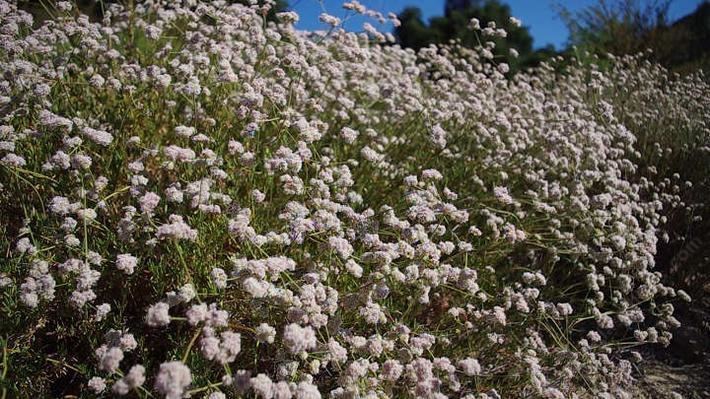 | ||
Similar Eriogonum, Artemisia californica, Adenostoma fasciculatum, Salvia mellifera, Adenostoma | ||
California buckwheat eriogonum fasciculatum
Eriogonum fasciculatum is a species of wild buckwheat known by the common names California buckwheat and eastern Mojave buckwheat.
Contents
- California buckwheat eriogonum fasciculatum
- California buckwheat eriogonum fasciculatum san diego california
- Distribution
- Description
- Varieties
- Uses
- Wildlife
- Cultivation
- References
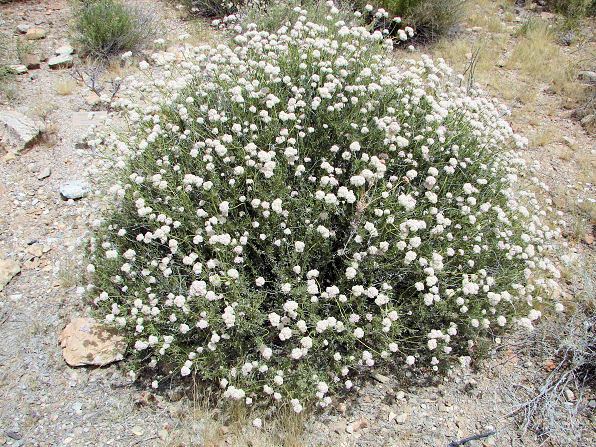
California buckwheat eriogonum fasciculatum san diego california
Distribution
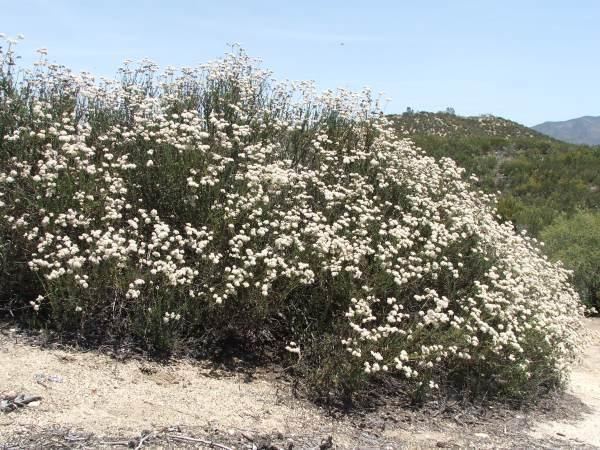
This common shrub is native to the Southwestern United States, California, and northwestern Mexico. It is found from the coasts of California and Baja California; eastwards through the Southern California Coast Ranges, Transverse Ranges, and Peninsular Ranges; and further east into the Mojave Desert and Great Basin.
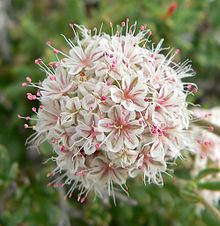
It grows on slopes and dry washes in diverse habitats, including chaparral, coastal sage scrub, grasslands, sagebrush scrub, pinyon-juniper woodland, and creosote bush scrub.
Description
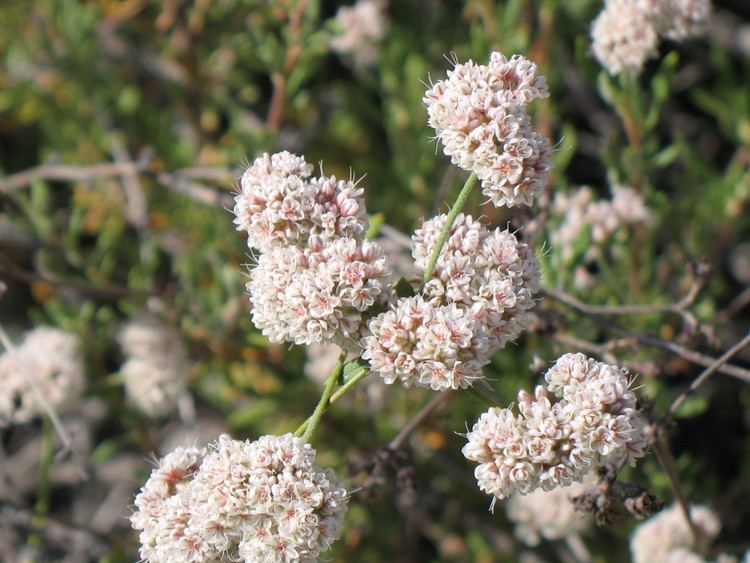
Eriogonum fasciculatum is variable in appearance, forming a patchy, compact bramble or a spreading bush approaching 2 metres (6.6 ft) in height and 3 metres (9.8 ft) across. The leaves grow in clusters at nodes along the branches and are leathery, woolly on the undersides, and rolled under along the edges.
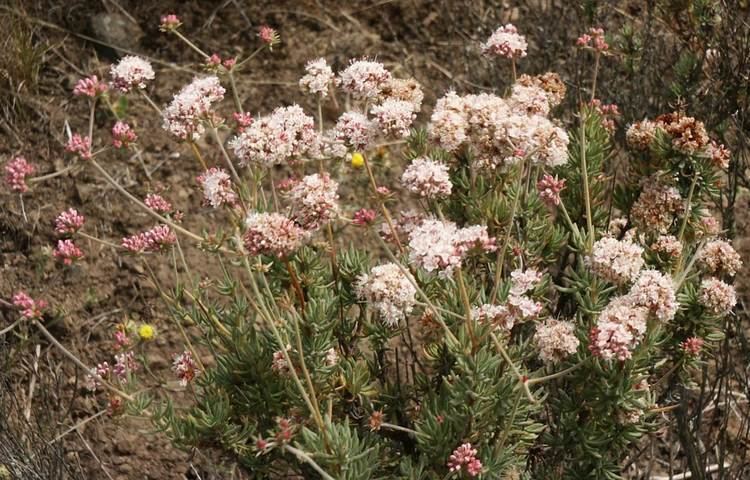
Flowers appear in dense, frilly clusters which may be anywhere from a few millimeters to 15 centimeters wide. Each individual flower is pink and white and only a few millimeters across.
Varieties
There are a number of distinct varieties, they include:
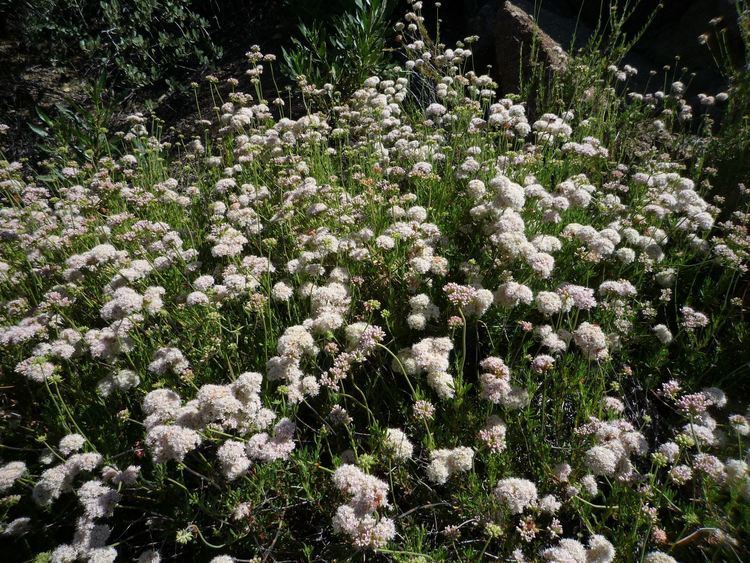
Uses
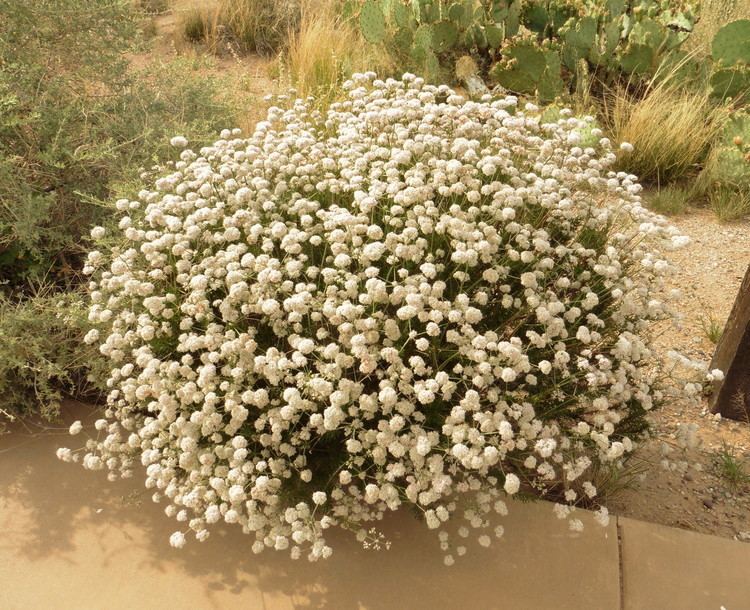
This widespread species was used extensively as a traditional medicinal plant by Native Americans for a variety of ailments, including the treatment of headache, diarrhea, and wounds. The Zuni people use a poultice of powdered root and apply it to cuts and arrow or bullet wounds. A decoction of the root is taken after parturition to heal lacerations. This same decoction is also taken for hoarseness and colds involving the throat.
Wildlife
This species is the most important native source of honey in California, particularly attractive to numerous species of native bees and other pollinators, and is a good source of nectar over many months in dryer areas. It also attracts introduced honey bees (Apis mellifera).
California buckwheats are food plants for several butterflies, notably the Bernardino dotted-blue (Euphilotes bernardino), lupine blue (Plebejus lupini), Mormon metalmark (Apodemia mormo), and Behr's metalmark (Apodemia virgulti). Probably the butterfly most commonly seen with the species is the nut-brown hairstreak (Satyrium saepium), which frequents plants in full flower.
Cultivation
Eriogonum fasciculatum is cultivated as an ornamental plant, for planting in native plant, drought tolerant, and wildlife gardens, and for larger designed natural landscaping and habitat restoration projects.
